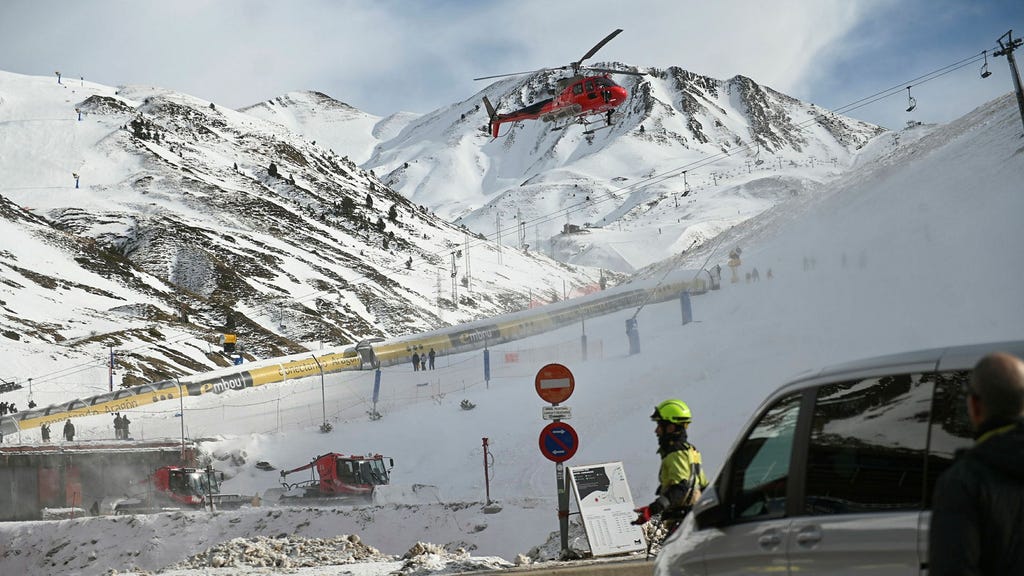The tranquil ski slopes of Astún, Spain, were shattered shortly before noon on a Saturday by a catastrophic ski lift accident. The serenity of the snow-capped Pyrenees mountains was abruptly replaced by chaos and fear as a critical cable malfunction sent lift chairs and a drive wheel crashing to the ground. The incident, occurring amidst ideal skiing conditions of abundant snow and pleasant weather, left a trail of injuries and stranded skiers clinging precariously to their suspended chairs. The picturesque winter landscape transformed into a scene of frantic rescue efforts as emergency personnel raced against time to provide aid and evacuate those trapped high above.
Initial reports from Cope, citing official sources, indicated at least 30 individuals sustained injuries in the terrifying incident. Of these, a significant number, around ten, required immediate transport to nearby hospitals, including facilities in Jaca, Huesca, and Zaragoza, the latter being placed on high alert to receive the influx of casualties. The extent of the injuries varied, with Diario del Alto Aragon painting a grimmer picture, reporting nine individuals in extremely critical condition and an additional eight seriously injured. The most severely affected victim, a woman, was airlifted by helicopter to a specialized hospital in Zaragoza, underscoring the gravity of her injuries. As the scale of the disaster unfolded, distressing images emerged depicting fallen lift chairs scattered across the snow, starkly illustrating the force and suddenness of the collapse.
While medical teams attended to the injured, a harrowing reality unfolded above – approximately one hundred skiers remained trapped in their lift chairs, suspended in mid-air. The precarious situation necessitated a large-scale rescue operation, involving both ambulance and police helicopters working in tandem to reach the stranded skiers. Ground crews, comprising numerous ambulances and firefighters, also converged on the scene, providing support and preparing to receive evacuees. The challenging terrain and the scale of the rescue operation added layers of complexity to the already dire situation.
Eyewitness accounts and preliminary investigations began to shed light on the possible causes of the devastating accident. El País reported that a drive wheel at one end of the lift system had detached, the crucial component likely responsible for maintaining cable tension and stability. This catastrophic failure resulted in the lift chairs violently ”bouncing” and ejecting passengers, with some chairs even flipping upside down. This detail further emphasized the chaotic and potentially life-threatening conditions skiers faced during the collapse. The combination of speed, the dislodging of chairs, and the height from the ground contributed to the severity of the injuries.
The vibrant ski resort, popular with domestic tourists and nestled near the French border, was immediately shut down as the gravity of the situation became apparent. The provincial government promptly dispatched representatives to the scene, underscoring the seriousness of the incident and the need for a coordinated and comprehensive response. The focus shifted from leisure and recreation to emergency management and investigation, as authorities worked to understand the sequence of events leading to the catastrophic failure and ensure the safety of everyone involved. The incident served as a stark reminder of the inherent risks associated with such mechanical systems and the importance of rigorous safety protocols.
News of the catastrophe quickly spread, drawing expressions of shock and concern from high-ranking officials. Spanish Prime Minister Pedro Sánchez took to social media platform X to express his dismay, offering condolences and support to the victims and their families. His message reflected the nation’s collective concern and highlighted the impact of the incident, extending far beyond the immediate vicinity of the ski resort. The accident cast a somber shadow over the typically joyful winter season, bringing the fragility of life and the unexpected nature of such tragedies into sharp focus.
The Astún ski lift accident serves as a sobering reminder of the importance of meticulous maintenance and stringent safety regulations in such recreational settings. The incident, unfolding against the backdrop of a popular holiday destination, underscored the vulnerability of those enjoying leisure activities. The comprehensive rescue effort, involving multiple agencies and significant resources, highlighted the dedication of first responders in the face of adversity. As investigations continue, the findings will be crucial in preventing future tragedies and ensuring the safety and well-being of all who seek enjoyment in such environments. The incident also underscores the need for continued vigilance and improvement in safety protocols to prevent similar disasters in the future.














